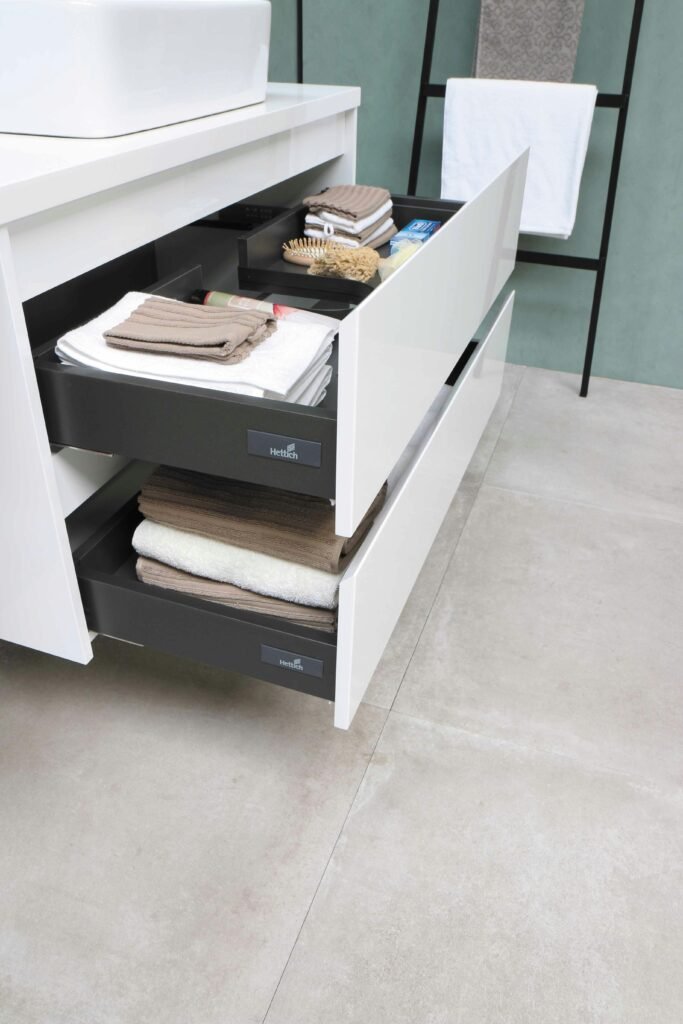Imagine a world where your drawers magically organize themselves, making finding that missing sock or favorite pen a breeze. With the rise of smart and automated drawer systems, this future is becoming a reality. These innovative drawers utilize cutting-edge technology to not only sort your belongings, but also provide convenient features like automatic labeling and inventory management. Say goodbye to clutter and hello to effortless organization as these smart and automated drawer systems revolutionize the way we store and access our belongings.

This image is property of images.unsplash.com.
What are Smart and Automated Drawer Systems?
Definition of Smart and Automated Drawer Systems
Smart and automated drawer systems are innovative storage solutions that utilize advanced technology to provide efficient and convenient organization. These systems are equipped with sensors, motors, and electronic controls, enabling them to open, close, and adjust their compartments automatically. Additionally, smart drawer systems can be integrated with artificial intelligence (AI) and machine learning algorithms to optimize inventory management and provide valuable insights.
Benefits of Smart and Automated Drawer Systems
Smart and automated drawer systems offer numerous benefits to organizations and individuals alike. Firstly, these systems enhance efficiency and productivity by automating the retrieval and storage of items, minimizing the time spent searching for specific objects. Secondly, smart drawer systems optimize space utilization by maximizing storage capacity and reducing clutter. Moreover, these systems provide enhanced security and access control, ensuring that only authorized individuals can access the contents of the drawers. Additionally, smart and automated drawer systems can be integrated with inventory management systems, enabling real-time tracking and improved inventory accuracy. Finally, these systems are user-friendly and easily accessible, making them suitable for a wide range of applications.
Current Applications of Smart and Automated Drawer Systems
Automated Office Storage
Smart and automated drawer systems are increasingly being implemented in office settings to revolutionize storage and optimize documentation management. These systems offer swift and efficient retrieval of documents and supplies, resulting in improved productivity and reduced administrative efforts. With the ability to integrate with electronic document management systems, these drawer systems enable seamless organization, tracking, and sharing of important files and records, leading to streamlined operations and enhanced collaboration.
Smart Kitchen Organization
In the realm of home automation, smart and automated drawer systems are finding their place in kitchen organization. These systems allow for hassle-free storage and retrieval of kitchen utensils, cutlery, and small appliances. By using sensors and AI algorithms, these smart drawer systems can learn and categorize items based on usage patterns, making it easier for users to find and maintain their kitchen essentials. Additionally, some smart drawer systems offer features such as self-cleaning and temperature-controlled compartments, further enhancing their functionality and convenience in the kitchen environment.
Automated Retail Storage
Retailers are increasingly adopting smart and automated drawer systems to optimize their storage and inventory management capabilities. These systems enable efficient organizing of small and medium-sized products, making it easier for employees to locate and retrieve items quickly, especially during peak hours. By integrating with point-of-sale systems and inventory management software, retailers can easily monitor stock levels and replenish inventory, reducing out-of-stock situations and ensuring a seamless shopping experience for customers.

This image is property of images.unsplash.com.
The Advantages of Smart and Automated Drawer Systems
Improved Efficiency and Productivity
One of the key advantages of smart and automated drawer systems is the significant improvement in efficiency and productivity they offer. By automating the storage and retrieval process, these systems eliminate the need for manual searching and sorting, saving time and effort. Tasks that once required manual labor can now be completed with a simple push of a button. This increased efficiency translates into higher productivity levels for organizations, allowing employees to focus on more critical tasks and reducing the chances of errors or delays.
Space Optimization
Smart and automated drawer systems excel in space optimization, making them valuable in environments where effective utilization of space is crucial. These systems are designed to maximize storage capacity by utilizing vertical space and providing adjustable compartments that can accommodate various sizes of items. By eliminating wasted space and reducing clutter, organizations can make the most efficient use of their available space, leading to better organization and the potential for expansion without physical expansion.
Enhanced Security and Access Control
Traditional storage methods often lack the necessary security measures to safeguard valuable items. Smart and automated drawer systems address this concern by providing enhanced security and access control features. These systems can be equipped with biometric or RFID authentication, ensuring that only authorized individuals can access the contents of the drawers. Organization owners can also monitor and track who accessed the drawers and when, improving security and accountability. This enhanced security reduces the risk of theft or tampering and provides peace of mind to organizations and individuals.
Integrated Inventory Management
Smart and automated drawer systems can integrate with inventory management systems, enabling real-time tracking and improved inventory accuracy. By automatically updating inventory levels whenever an item is stored or retrieved, these systems eliminate the need for manual inventory checks and reduce the chance of errors caused by human intervention. Integration with inventory management software also allows organizations to generate reports, analyze trends, and make data-driven decisions, thus optimizing their supply chain and reducing costs.
Ease of Use and Accessibility
Smart and automated drawer systems are designed to be user-friendly and accessible to a wide range of users. With intuitive interfaces and simple control mechanisms, these systems can be easily operated by anyone, regardless of their technical expertise. Additionally, these systems can be adapted to accommodate individuals with physical disabilities, ensuring equal access for all. The ease of use and accessibility of smart and automated drawer systems contribute to their widespread adoption in various settings, from offices to homes and retail establishments.
Integration with Artificial Intelligence and Machine Learning
AI-based Inventory Optimization
By integrating artificial intelligence and machine learning algorithms, smart and automated drawer systems can optimize inventory management. These systems can learn from historical data, analyze patterns of item usage, and predict future demand. As a result, organizations can ensure that popular items are always in stock, reducing the risk of lost sales or customer dissatisfaction. Improved inventory optimization leads to better cost control, reduced wastage, and increased customer satisfaction.
Predictive Maintenance and Service Scheduling
AI integration also empowers smart and automated drawer systems to perform predictive maintenance. By analyzing usage patterns and detecting anomalies, these systems can identify and address potential issues before they result in system failures. Smart drawer systems can generate automated maintenance alerts, allowing organizations to schedule timely servicing and inspection, thus minimizing downtime and prolonging the lifespan of the system. This proactive approach to maintenance ensures the smooth operation of the drawer systems and prevents costly repairs in the long run.
Data Analysis for Consumer Behavior Insights
Smart and automated drawer systems collect vast amounts of data regarding item usage, retrieval patterns, and user behavior. By analyzing this data, organizations can gain valuable insights into consumer behavior, preferences, and trends. This information can be used to develop targeted marketing strategies, tailor product offerings to specific customer segments, and make informed decisions regarding product placement and pricing. The data-driven approach facilitated by smart and automated drawer systems can significantly improve an organization’s ability to satisfy customer needs and increase sales.

This image is property of images.unsplash.com.
Emerging Technologies in Smart and Automated Drawer Systems
Internet of Things (IoT) Integration
The integration of smart and automated drawer systems with the Internet of Things (IoT) brings added functionality and connectivity. IoT integration enables seamless communication between the drawer systems and other smart devices, allowing for centralized control and monitoring. For example, homeowners can use their smartphones or voice assistant devices to open and close kitchen drawers or receive notifications when a package is delivered to an automated office storage drawer. IoT integration also enables remote monitoring and diagnostics, facilitating proactive maintenance and system optimization.
Robotics and Autonomous Systems
The integration of robotics and autonomous systems further enhances the capabilities of smart and automated drawer systems. Robotic arms can be employed to handle heavier or bulkier items, automating the entire storage and retrieval process. Autonomous navigation systems can optimize the movement of the smart drawer systems, ensuring efficient utilization of space and minimizing the risk of collisions. By combining robotics and autonomous systems with smart drawer technology, organizations can achieve even greater levels of efficiency, productivity, and convenience.
Challenges in Implementing Smart and Automated Drawer Systems
Cost and Return on Investment
One of the primary challenges organizations face when implementing smart and automated drawer systems is the initial cost and return on investment (ROI). These systems often require significant upfront investment, including the cost of equipment, installation, and integration with existing infrastructure. However, organizations must consider the potential long-term benefits and cost savings that smart and automated drawer systems offer. Improved efficiency, optimized space utilization, enhanced security, and streamlined operations can result in significant cost savings and a positive ROI over time.
Technical Complexity
Implementing smart and automated drawer systems requires expertise in various technical domains, including electronics, software, and system integration. Organizations may encounter challenges in finding skilled personnel to install, maintain, and troubleshoot these systems. Furthermore, as technology continues to evolve, organizations must ensure that their smart drawer systems remain compatible with future upgrades and advancements. Addressing technical complexities requires an ongoing commitment to training and collaboration with experts in the field.
Data Security and Privacy
As smart and automated drawer systems collect and store data about item usage and user behavior, organizations must prioritize data security and privacy. These systems often integrate with other software platforms or connect to the internet, increasing the risk of data breaches or unauthorized access to sensitive information. Organizations must implement robust cybersecurity measures, such as encryption and access control protocols, to protect the data stored within the smart drawer systems. Additionally, organizations must be transparent with users about their data collection practices and ensure compliance with relevant data protection regulations.
Implications for the Future of Organizations
Streamlined and Efficient Operations
The widespread adoption of smart and automated drawer systems is expected to streamline and optimize operations across various sectors. By automating key storage and retrieval processes, organizations can achieve higher levels of efficiency, reducing manual labor and minimizing human error. Improved efficiency results in faster response times, increased productivity, and ultimately, more satisfied customers. As organizations continue to integrate these systems into their workflows, they will experience smoother and more streamlined operations.
Reduced Storage Footprint
Smart and automated drawer systems offer a significant advantage in terms of space optimization. By utilizing vertical space and maximizing storage capacity, organizations can reduce their overall storage footprint. This reduction in physical storage requirements allows organizations to repurpose valuable space for other purposes, such as additional work areas or customer-facing facilities. Moreover, the elimination of clutter and improved organization can contribute to a cleaner and more visually appealing environment.
Enhanced Customer Experience
Smart and automated drawer systems have a direct impact on the customer experience, particularly in retail and hospitality settings. By minimizing wait times and enabling quick and accurate retrieval of products or information, these systems enhance customer satisfaction. Additionally, the integration of AI and machine learning algorithms can personalize the customer experience by offering tailored recommendations or promotions based on individual preferences and previous interactions. The enhanced customer experience provided by smart and automated drawer systems can result in increased customer loyalty and positive word-of-mouth referrals.
Data-Driven Decision Making
The data collected by smart and automated drawer systems offer organizations valuable insights and analytics that can inform data-driven decision making. By analyzing patterns in item usage, consumer behavior, and inventory levels, organizations can make more informed decisions regarding stock replenishment, resource allocation, and customer segmentation. Furthermore, these data-driven insights can be used to identify opportunities for process improvement, optimize supply chains, and refine product offerings. The availability of accurate and timely data enables organizations to adapt and respond to changing market dynamics and customer demands effectively.
Case Studies: Successful Implementations of Smart and Automated Drawer Systems
Amazon Go Stores
Amazon Go stores, well-known for their cashier-less shopping experience, rely heavily on smart and automated drawer systems. Customers can simply scan their smartphone at the entrance and use the Amazon Go app to select the items they want to purchase. These items are automatically tracked and added to the customer’s virtual cart as they are placed in or removed from the smart drawer systems. When customers are finished shopping, they can leave the store without the need to visit a traditional checkout counter. Amazon Go stores demonstrate the seamless integration of smart and automated drawer systems with AI, machine learning, and IoT technologies.
Toyota Production System
In the automotive industry, Toyota has implemented smart and automated drawer systems as part of their renowned Toyota Production System (TPS). These systems enable efficient storage and retrieval of tools and components needed in the assembly process. By automating the flow of materials and ensuring that the right parts are always readily available, Toyota achieves high levels of efficiency and productivity in their manufacturing processes. The integration of smart and automated drawer systems within TPS exemplifies the successful application of these technologies to optimize operations in a demanding production environment.
Future Trends in Smart and Automated Drawer Systems
Cloud-Based Connectivity
The future of smart and automated drawer systems lies in cloud-based connectivity. By connecting these systems to the cloud, organizations can access their drawer systems remotely, perform system updates, and gather real-time data for analysis. Cloud-based connectivity also enables cross-platform integration, allowing organizations to link their smart drawer systems with other smart devices, applications, and services. This interconnected ecosystem of smart devices and cloud-based platforms will further enhance the functionality and capabilities of smart and automated drawer systems.
Customization and Personalization
As technology continues to advance, smart and automated drawer systems will become increasingly customizable and personalized. Organizations and individuals will have the option to configure drawer compartments based on their specific storage needs, allowing for greater flexibility and adaptability. Additionally, these systems can provide personalized recommendations and suggestions based on user preferences and historical usage patterns. By meeting individual needs and tailoring experiences, customized and personalized smart drawer systems will continue to redefine organization and convenience.
Collaborative Robots
The integration of collaborative robots, also known as cobots, with smart and automated drawer systems is an emerging trend in the field. Collaborative robots can work alongside humans, assisting with tasks such as retrieving and restocking items from the smart drawers. These robots can be programmed to work safely and efficiently, contributing to increased productivity while reducing physical strain on employees. With the collaboration between cobots and smart drawer systems, organizations can achieve a harmonious balance between human and automated labor, resulting in optimized operations and improved overall workplace safety.
Conclusion
Smart and automated drawer systems are revolutionizing the way organizations store, retrieve, and manage their belongings. With features such as automated operation, integration with AI and machine learning, and enhanced security, these systems offer numerous advantages. Efficiency and productivity improvements, space optimization, enhanced security, and integrated inventory management are just a few benefits of implementing smart and automated drawer systems. As technology continues to evolve, organizations must embrace the challenges and future trends associated with these systems and harness their potential to streamline operations, reduce storage footprint, enhance the customer experience, and enable data-driven decision making. By doing so, organizations can position themselves at the forefront of innovation and unlock a multitude of possibilities for the future.
